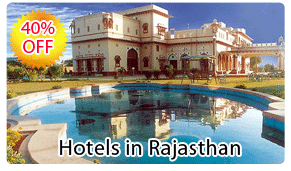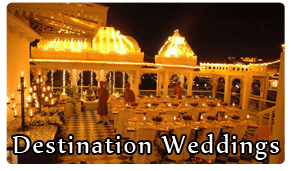
- perfectholidaytravel@hotmail.com
- +91 9811138106 / 9811 5939 89
Jaipur City

Jaipur, popularly known as the Pink City, was founded in 1727 AD by one of the greatest rulers of the Kachhawaha clan, the astronomer king Sawai Jai Singh. The pink color was used at the time of making to create an impression of red sandstone buildings of Mughal cities - and repainted in 1876, during the visit of the Prince of Wales. The city is best explored on foot and the adventurous visitor willing to go into the inner lanes can discover a whole new world not visible to the tourist-in-a-hurry. The city was designed by Vidyasagar Chkravarty, a young Bengali architect, who succeeded in making a marvellous synthesis of many influences- Hindu, Jain, Mughal (with Persian overtones), beside his own idea from eastern India. This fascinating city with its romantic charm takes you to an epoch of royalty and tradition. The imperial city, replete with amazing legends of romance and heroism. This is the fortified city of Jodhpur, standing a wary sentinel to the great Thar Desert. Beckoning you to the wilderness of fascinating dunes, rocky terrain and thorny vegetation.
Hawa Mahal
Hawa Mahal Or palace of winds, which is , in fact, no Palace, but an extraordinary facade 0f 953 airy windows used by the ladies of the Palace to watch the outside world. It was built in 1799. The top of the honeycomb like frontage of Hawa Mahal offers an excellent view of the surrounding
City Palace
City Palace In the center of the sprawling old walled city stands the City Palace with its ornate entrance gates, arches, projecting balconies and a series of courtyards. The ground and first floors of the seven storey Chandra Mahal houses the Maharaja Sawai Man Singh II Museum. The museum has a rare and rich collection of ornaments, arms, royal costumes, carpets and decorative art objects.
Jantar Mantar
The observatory of Maharaja Jai Singh II. The construction and precision of the observatory were a unique achievement for the year 1716. This observatory best reflects the passion of its founder for astronomy and his scientific genius. It helped in calculating the movements and positions of stars and planets and in foretelling the eclipses.
Jaigarh Fort
It was recently opened to the public after being sealed for seven years, following a rumor that an enormous treasure in gold was buried in vaults under deep reservoirs.
Jaigarh , or the Fort of Victory, is a rugged fort built in 1726. The world's largest cannon on wheels is to be found here. The fort houses a museum and provides some excellent views of the Amer Palace.
Nahargarh Fort
Nahargarh Fort 15 km, provides a marvelous view of Jaipur city. Shekhawati 168 km, the painted town, was once subordinate to Jaipur. Sariska Palace 37 km, once a hunting lodge, now a private hotel set on the outskirs of a wildlife sanctuary where tiger, panther, blue bull, wild boar and deer roam the scrubby thicket and bush.
The Garland Forts
These forts, though built at different periods, are so located that they seem to be stringed together.
Amer
Amer Set in a picturesque location, Amer is a fascinating blend of Hindu and Mughal architecture. Built in the 16th century by Raja Man Singh, it sprawls on the hillside. Click here to see a panoramic view of the formidable Amer with Jaigarh in the background. Built in red sandstone and white marble, the palace complex has some very interesting apartments, the likes of which are not to be found anywhere else in the country. Jai Mandir, Sheesh Mahal, Sukh Niwas and Ganesh Pole are the prominent areas of interest. The old township of Amer lies at the foothills of the palace and has an old world charm, a character of its own. Jagat Shiromani Temple, Narsingh Temple are some of the places of interest.
Mehrangarh Fort
One of the largest forts in India, it is unsurpassed in beauty and grandeur. Innumerable palaces in the fort, interspersed with sprawling courtyards, are intricately carved. Various folk musicians and bands gather here on important occasions and perform against the magical backdrop of the fort - reviving the regal splendor of a bygone era.
Jaswant Thada
The 19th centuryJaswant Thada royal cenotaph, a creation in white marble was built in commemoration of Maharaja Jaswant Singh II and displays some rare portraits of Jodhpur's rulers.
Umaid Bhawan Palace
The only palace built in the 20th century as a famine relief project, which gave employment to hundreds of people for 16 years. Its sculpted lawns with sandstone pavements and bouquets of bougainvillea bushes, offer a lovely sight. The palace now runs as a hotel with a part of it retained as a museum.
Mandore
The capital of ancient Marwar, it is truly an oasis in the desert with its beautifully laid out gardens. The sprawling greenery of peepal, banyan, palms and plantains along with swirling fountains and lovely peacocks make Mandore a visual treat. The main attraction is the 'Hall of Heroes' housing sixteen gigantic figures chiselled out of a single rock and the cenotaphs of the former maharajas of Jodhpur.
Clock Tower and Sardar Market
One can go shopping for Jodhpur tie-and-dye textile, embroidered leather shoes, lacquer ware, antiques, carpets and puppets, amidst the setting of traditional haat bazaar and the well-planned Sardar Market near the Clock Tower.
Mahamandir Temple
Built in 1812, is an old walled town with few hundred houses. The temple with 84 beautifully carved pillars is an architectural wonder.
Kailana Lake
An artificial lake on the Jaisalmer road. An idyllic picnic spot with spectacular sunsets.
Balsamand Lake and Palace
A picturesque artificial lake with a summer palace on its banks. There are lush orchards of mango, guava and other fruits.
Sardar Samand Lake and Palace
As you drive to the lake, the picturesque countryside with lovely villages and smiling folks on the way, offer a spectacular sight. A rendezvous with chinkara and black buck might add more fun to the drive.
Osian
An ancient town of the Thar Desert, renowned for a cluster of ruined Brahmanical and Jain temples dating from 8th to 11th century. The most important temples are the Surya or Sun Temple and the Sachiya Mata Temple. The latter has a 'shikhar' clustered by a row of tarrets, an ambulatory and a large assembly hall with an elaborate ceiling.
Guda Bishnoi (25 km)
These are immaculately kept villages of Bishnoi community-staunch believers in the sanctity of plant and animal life. Khejri trees and varieties of deer are the attractions of the villages
How to get there
Air : Jaipur is connected by air with Delhi, Jodhpur, Udaipur, Aurangabad, Bombay, Varanasi, Calcutta, Ahmedabad.
Rail : Jaipur is connected by rail with Delhi, Agra, Ahmedabad, Ajmer, Abu Road (Mount Abu), Udaipur, Bombay and Sawai Madhopur.
Road : Good motorable roads connect Jaipur with Delhi 258 km, Agra 236 km, Bikaner 321 km, Udaipur 405 km, Ajmer 131 km, Jodhpur 316 km, Bharatpur 176 km, Jaisalmer 638 km and Bombay 1202 km










